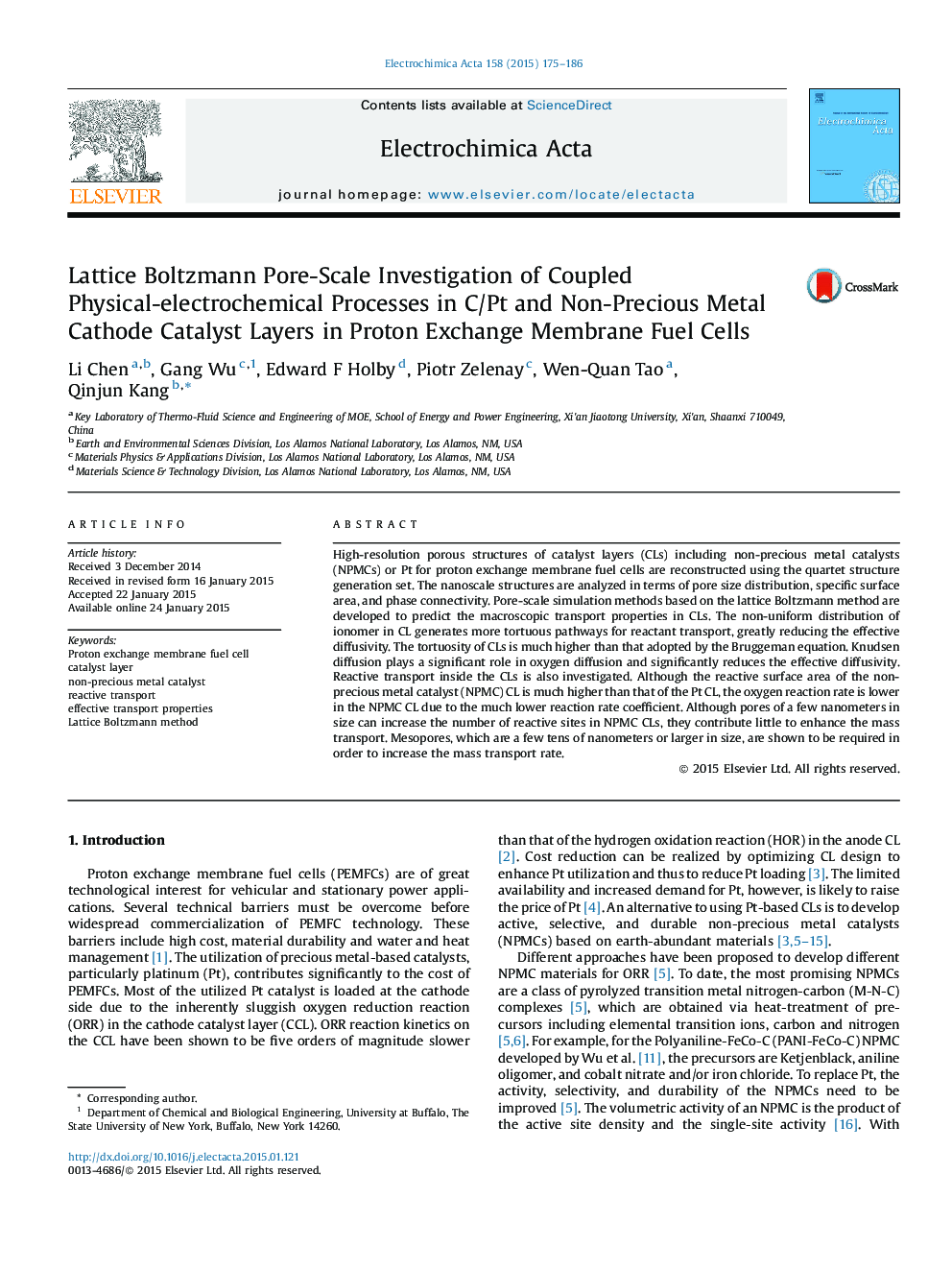| Article ID | Journal | Published Year | Pages | File Type |
|---|---|---|---|---|
| 184454 | Electrochimica Acta | 2015 | 12 Pages |
•Nanoscale structures of catalyst layer are reconstructed.•Pore-scale simulation is performed to predict macroscopic transport properties.•Reactive transport in catalyst layer with non-precious metal and Pt catalysts is studied.•Mesopores rather than micropores are required to enhance mass transport.
High-resolution porous structures of catalyst layers (CLs) including non-precious metal catalysts (NPMCs) or Pt for proton exchange membrane fuel cells are reconstructed using the quartet structure generation set. The nanoscale structures are analyzed in terms of pore size distribution, specific surface area, and phase connectivity. Pore-scale simulation methods based on the lattice Boltzmann method are developed to predict the macroscopic transport properties in CLs. The non-uniform distribution of ionomer in CL generates more tortuous pathways for reactant transport, greatly reducing the effective diffusivity. The tortuosity of CLs is much higher than that adopted by the Bruggeman equation. Knudsen diffusion plays a significant role in oxygen diffusion and significantly reduces the effective diffusivity. Reactive transport inside the CLs is also investigated. Although the reactive surface area of the non-precious metal catalyst (NPMC) CL is much higher than that of the Pt CL, the oxygen reaction rate is lower in the NPMC CL due to the much lower reaction rate coefficient. Although pores of a few nanometers in size can increase the number of reactive sites in NPMC CLs, they contribute little to enhance the mass transport. Mesopores, which are a few tens of nanometers or larger in size, are shown to be required in order to increase the mass transport rate.
